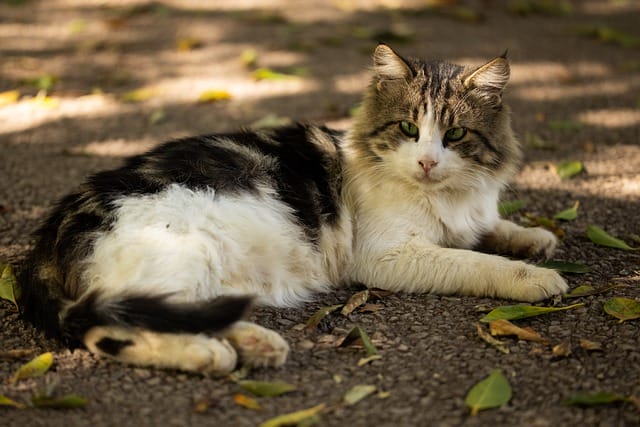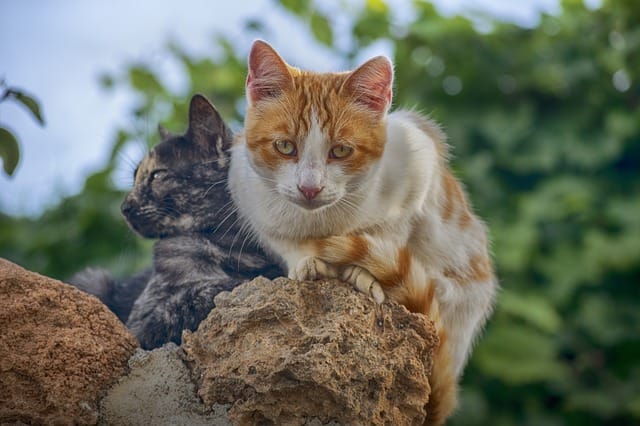
What if biotechnology could make your cat hypoallergenic? The fact is that truly allergy-free cats do not exist.
Sorry. That’s because all cats, no matter how long or short their hair is, produce a harmful little protein called Fel d 1 found in the saliva and oil glands, which causes most cat allergies.
Some shed more than others, but it is true that no cat sheds none.
On average, certain breeds have lower rates of Fel d 1, but there is little data.
In the 2000s, a much-hyped start-up that said it had developed hypoallergenic cats collapsed in disgrace, leaving customers with pets that still made them wheeze and others who had spent thousands of dollars upfront for no good reason.
This does not mean that there is no such thing as a non-allergenic cat. A few breeds, such as the Peterbald and hairless Sphynx, do not produce any Fel d 1 at all, because they lack hair to shed it on to you.
If you experience symptoms from normal cats then a Sphynx is worth a try. As for hypoallergenic cats, it’s best to forget about them and focus on the real problem: developing an allergy to cats in general.
However, when traditional breeding has failed, scientists are now turning to biotechnology.
In recent years, a variety of sci-fi-like tactics have been utilized to combat Fel d 1: a kibble coated in an egg-yolk derivative that neutralizes the allergen, a vaccination utilizing cucumber mosaic virus to trick the cat’s immune system into producing antibodies that bind to the allergenic protein, and even genetic engineering.
This kibble, which is marketed as Purina’s Pro Plan LiveClear cat food on store shelves, has been clinically tested on more than 100 cats.
Although viable gene therapy is still a long way off, scientists have been able to remove Fel d 1 from cat cells in a petri dish using CRISPR/cas9 gene-editing technology.
All of these approaches will not cure Fel d 1 in a cat completely, but they may lower allergen levels enough to keep allergic people from sneezing and itching.
(Hypoallergenic, by the way, is frequently used colloquially to mean “no allergies,” although it technically means “reduction of allergies.”) This decrease can be temporary because the protein can build up in an animal’s system.
Allergists nowadays advocate that cat owners use allergy pills or injections on themselves, as well as clean their cat with a HEPA filter and bathe it frequently.
Those techniques are mostly focused on the human, but more recent biotech solutions are all geared toward molding the cat to the owner’s wishes. And that may not come as a surprise.
These strategies involve cutting-edge technologies, but they might also be seen as only a logical progression in our millennia-old bond with cats, during which we have domesticated, neutered, spayed, and fiddled with them to make them even more reliant on us.
Over the centuries humans have bred cats for docility or friendliness toward people, or cleverness and ease of training.
Even just a few decades ago, most cats’ days were spent outdoors. The exclusively indoor cat is a fairly new invention, made possible by the invention of litter, that has led to many problems for cat owners.

More than a decade ago, Ebenezer Satyaraj, the director of molecular nutrition at Nestlé’s parent company Purina, began envisioning how to use cat food against Fel d 1.
A key realization was that cats spend a lot of time grooming themselves, this fact had previously been overlooked.
Normally, this behavior spreads the Fel d 1 allergen around and makes life even more uncomfortable for allergic people.
But Satyaraj believed that if the Fel d 1 in a cat’s saliva could be neutralized, then it would not spread and might even decrease over time because the cats would lick themselves less often.
Satyaraj and his colleagues came up with the concept of making anti-Fel d 1 proteins from egg yolk, which are produced by injecting a hen with Fel d 1.
Her immune system sees this Fel d 1 as a foreign invader, generating antibodies that bind and neutralize it.
These antibodies are present in chicken eggs as a result of natural immune responses, so they are safe to eat.
But, astonishingly, they may also function as a kind of interspecies immunity transfer: There’s an egg-yolk antibody supplement for pigs that contains E. coli protection.
In this case, Satyaraj wanted the egg-yolk antibodies to neutralize Fel d 1 on the cats, ultimately taking over a chicken’s immunological role in its own egg, essentially cross-species immunity for cats.
It worked. On average, Purina’s cat food’s egg-yolk coverings reduce allergen shedding by 47 percent.
The objective, according to Satyaraj, is to bring Fel d 1 levels down below a threshold level to reduce allergy symptoms, it may not be enough for everyone, but it should be enough for some.
The effectiveness of the kibble will be determined by how much Fel d 1 a cat begins with and how sensitive the owner is to even tiny amounts of the allergen.
The effect simply fades away when you stop feeding them Purina food. A vaccine to reduce the shedding of Fel d 1 was developed by scientists at the University of Zurich in 2013 and has been tested on people, but it has not yet made it beyond the trial stage.
There is another kitty vaccine in the works at Novartis Animal Health focusing on reducing Fel d 1 and 2, this vaccine was originally scheduled for release last year but has been pushed back multiple times.
They exploited a multipart strategy originally intended for human vaccines: the Fel d 1 protein was hidden inside the shell of a cucumber mosaic virus, which was then encased in tetanus toxin.
This fools the cat’s immune system into thinking that Fel d 1 is part of a virus, according to Gary Jennings, the company’s chief operating officer.
After receiving the vaccine, the cat starts to generate antibodies that destroy Fel d 1.
Their allergy levels dropped significantly over several weeks, and Saiba discovered that allergic cat owners were able to spend more time stroking their vaccinated cats.
The technology was subsequently licensed to a major animal-health firm, whose name Jennings says he can’t reveal, to allow for veterinary applications.


GIPHY App Key not set. Please check settings